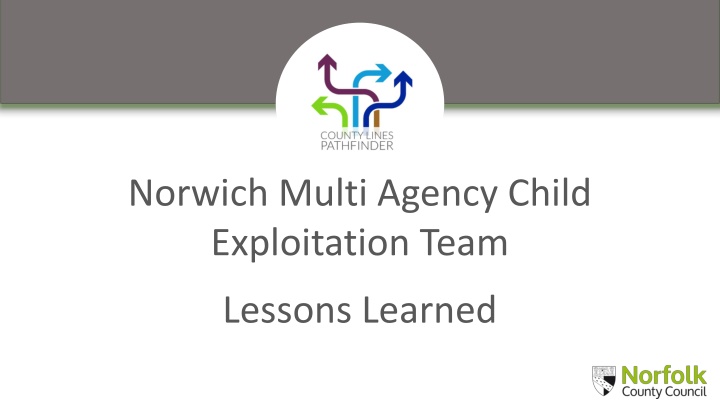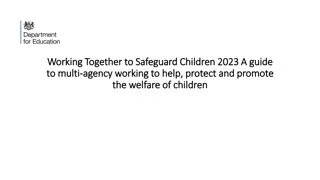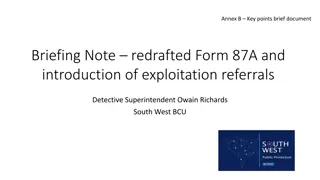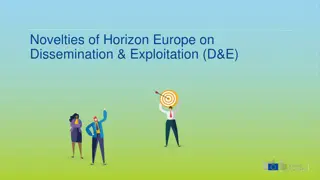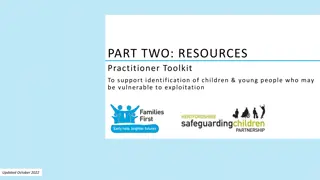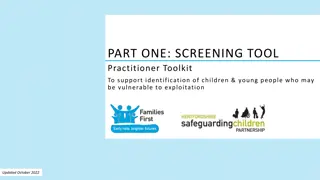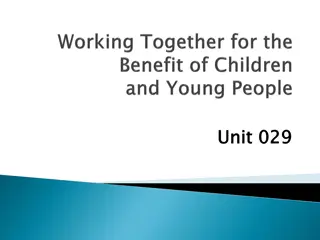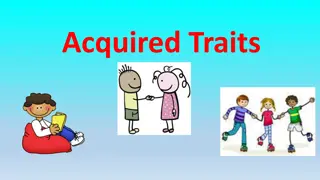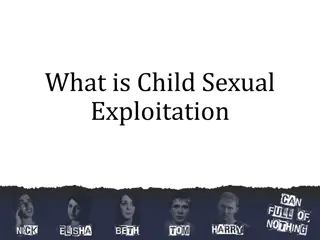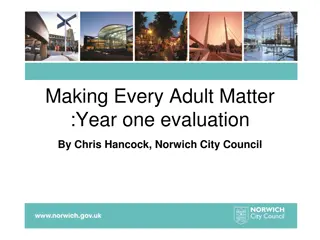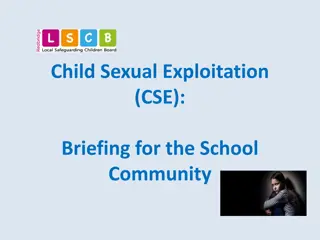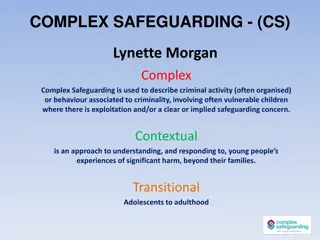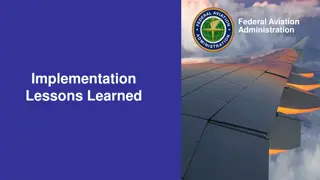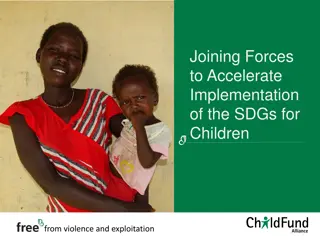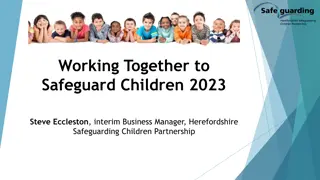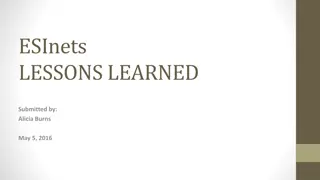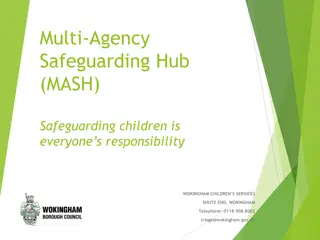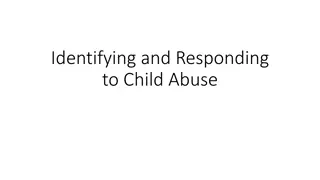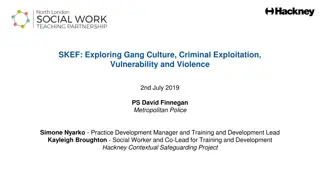Lessons Learned from Norwich Multi-Agency Child Exploitation Team
The Norwich Multi-Agency Child Exploitation Team pilot project aimed to address exploitation of children in Norfolk through a contextual safeguarding approach. By reframing the criminal justice response, the team focused on supporting exploited children as victims rather than perpetrators. The team comprised various professionals from different agencies and emphasized flexible, one-to-one support for children. Key aspects included access to funding, multi-agency screening, recruitment focusing on engaging children, and cultural competence of staff.
Download Presentation

Please find below an Image/Link to download the presentation.
The content on the website is provided AS IS for your information and personal use only. It may not be sold, licensed, or shared on other websites without obtaining consent from the author.If you encounter any issues during the download, it is possible that the publisher has removed the file from their server.
You are allowed to download the files provided on this website for personal or commercial use, subject to the condition that they are used lawfully. All files are the property of their respective owners.
The content on the website is provided AS IS for your information and personal use only. It may not be sold, licensed, or shared on other websites without obtaining consent from the author.
E N D
Presentation Transcript
Norwich Multi Agency Child Exploitation Team Lessons Learned
The Child Criminal Exploitation (CCE) team was a co-located multi-agency pilot based in the Norwich area of Norfolk, to test out different approaches to the problem of exploitation. The team was established in response to a growing number of children being identified by Norfolk Youth Offending Team who were criminally exploited through the county lines business model. It was recognised that a criminal justice response was not sufficient to address the needs of these highly vulnerable children a and there was a need to employ a contextual safeguarding approach and a more robust multiagency response to exploited children. The pilot commenced in March 2018 and was initially comprised of YOT staff only with Children s Services and Norfolk Constabulary staff joining respectively in August 2018 and December 2018. The remit of the team was established as the delivery of direct case work and development and delivery of multi-agency CCE training across the county. The team developed their knowledge and expertise over time. With the implementation of the YJB funded county lines pathfinder we were able to draw together a report regarding the pilot project journey, the impact of this approach, the challenges encountered, and the lessons learnt. The initial period of the pilot was from August 2018 for one year but was extended to September 2020. Summary
The CCE team was established to reframe the prevailing criminal justice response to shift the paradigm highlighting CCE as a significant safeguarding issue. Furthermore, to gain a greater understanding of the exploitation of children in Norwich where CCE appeared to be particularly prevalent. This resulted in a wider understanding across partner agencies in Norfolk A focussed and dedicated multiagency team was considered the most effective vehicle to facilitate this shift, as children were often viewed as perpetrators and criminalised for drug-related offences rather than victims of exploitation who instead required our support. The premise of the team was to afford practitioners the opportunity to work flexibly with identified children on a one to one basis, with relationship building being the founding principle of our work. Purpose
The Team 2 youth justice workers (loaned by YOT) 3 Police officers (managed by Norfolk constabulary) We also worked closely with 3 detached youth workers Parenting worker (loaned by YOT) Operations Manager (YOT funded) 2 family practitioners (Early Intervention Youth Fund) 3 social workers (2 loaned by children's services, 1 loaned from YOT)
Access to Funding/Resource reallocation: commitment from partners to redirect current resources. Multi-Agency screening process: a clear framework and process to identify children at risk of CCE and the subsequent responses. Recruitment: Children should form a significant aspect of the recruitment process. Ultimately, being able to engage children and their family is the single most important aspect of this work and needs to be at the forefront when recruiting. Cultural competence of staff: The recruitment process should be robust when considering knowledge, skills and values of staff. Mobilisation and implementation plan: A clear strategic plan regarding recruitment, team formulation, processes and communication needs to be established, which includes adequate investment in the foundations of the team. Co-location: professionals from various agencies based in the same location is imperative for information sharing and improving a multi-agency response to CCE, therefore identification of suitable premises is key. Implementation and mobilisation strategy. Particularly developing a mission statement and understanding various professional backgrounds as examples. Evaluation: resource and commitment need to be given to consider robust evaluation and monitoring. Readiness
Trusted relationships: The value of small (5-7 cases), protected, non-statutory caseloads are a significant feature in enabling practitioner s freedom to work flexibly and cannot be underestimated. Practitioners experiences: skills, understanding of exploitation and ability to engage children is paramount and not necessarily dependant on professional qualifications. Staff safety is paramount and a robust safety policy must be embedded. Staff should receive additional safety training in addition to mandatory Council training. Working with parents/carers and children as a whole offers a greater likelihood of keeping them safe and facilitating change. A Specific separate service and support should be offered to parents/carers, working in conjunction with practitioners supporting children. Youth based outreach work is an essential component in reducing the exploitation of children in the community and needs to be a staple in future approaches to address CCE. A dedicated CCE team illustrated the depth of the problem within Norfolk and acted as a catalyst in galvanising a collective response from agencies. Outcomes
Local CCE practitioners delivering CCE training, informed by local children and experiences, to local professionals. 362 delegates attended the events. 94% of respondents reported to now having a good or very good understanding of CCE and County Lines. Establishing and maintaining links with alternative providers and short stay schools (PRUs) is essential in understanding context, risk and safeguarding. Informal education, through conversations exploring emotional development, social development and positive life choices, has been the vehicle practitioners have used to work with children. Voluntary engagement is key, this is particularly true for children who have experienced the power imbalance through exploitation. An agreed methodology to capture outcomes should be in place from the beginning. Desistance is the gold standard in terms of positive outcomes for children, however, softer outcomes, such as children remaining in education, not entering care, not entering the criminal justice system, reduction in reoffending, missing episodes, increased positive presentation, less Police intelligence or Police contact, safely exiting an exploitative situation would be realistic positive outcomes and should be built into future outcome measurements. Outcomes cont.
Lessons Learned A single recording system: Holding information across different multi-agency systems increases the likelihood of information being missed and is not conducive to creating a single narrative around a child. Team demographic: The practitioner team should be gender-balanced as far as possible, and reflect the demographic of the community in which they work. The clear drop off at 18: There needs to be a strategic approach to bridging child and adult safeguarding in order to counteract the risk of service support abruptly ending once a child reaches 18. Pathways out: At a strategic level consideration needs to be given to greater partnership working and network building with voluntary agencies, employers, entrepreneurs etc, which could offer viable prospects to support children away from exploitation. Lack of access to a clinical psychologist: Practitioners working with children in such an intensive manner should have access to clinical supervision on a regular basis in order to support wellbeing and avoid practitioner burnout . A clinical psychologist would also aid in coordinating child planning meetings, facilitating case formulation, supporting consistency and robustness whilst ensuring that plans are truly trauma informed and not reactive. Children and vulnerable adults: A forum which discusses the overlap of children and vulnerable adults is imperative, to avoid silo working and understand context.
Feedback It's not involved, it's just once a week. It's calm. I didn't really feel it was benefiting me but it does cos every session I got a step further. Child I knew I wouldn t be judged by (worker) I felt like I had someone to turn to Child (Practitioners) have been amazing, you couldn t have done any more Parent I feel like a different person to when I started working with you Child It s the little things like going out for food and a chat about anything like the football or something. Then you do it a few times and you get to trust someone Child I can trust (worker) even though I know she has to tell people Child (Practitioner) has been incredible, she s the most amazing lady. It s like she s given me my son back Parent You re there for us, we can talk to you, you don t judge us, you do what you say . Parent Having (worker) to talk to who understood what I was going through and would tell me off in a positive way . Child
Further Information Report contact: Dan Wilson: grpnorfolk-yot-pcadmin@norfolk.gov.uk Norfolk Multi Agency Child Exploitation procedures: lauren.downes@norfolk.gov.uk Head of Youth Norfolk YOT CCE lead: Carla.hamilton@norfolk.gov.uk Cultural Competency document (will be available on the YJ Resource Hub soon as a product of the County Lines Pathfinder) Staff Safety Document (will be available on the YJ Resource Hub soon as a product of the County Lines Pathfinder) Summary Evaluation of CCE Awareness Raising Training (embedded)
